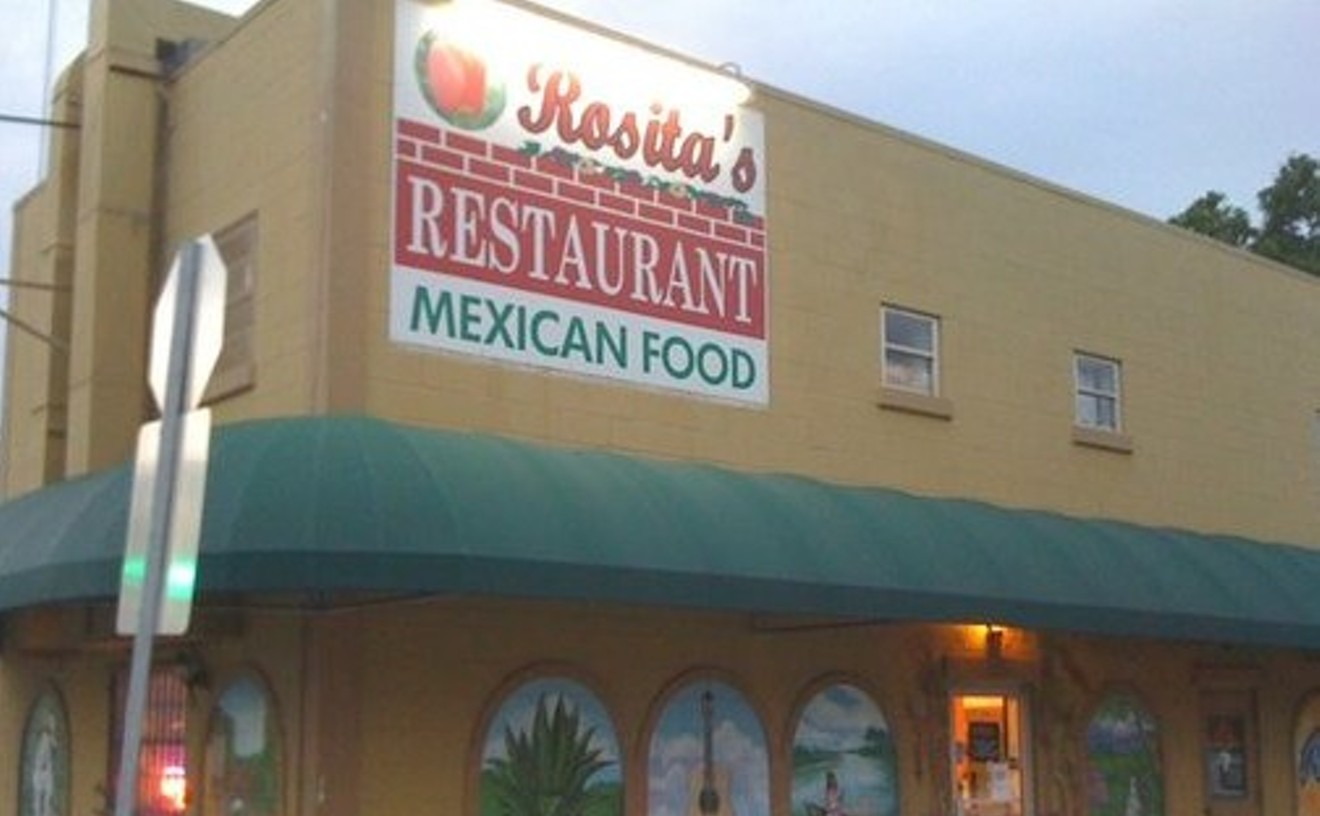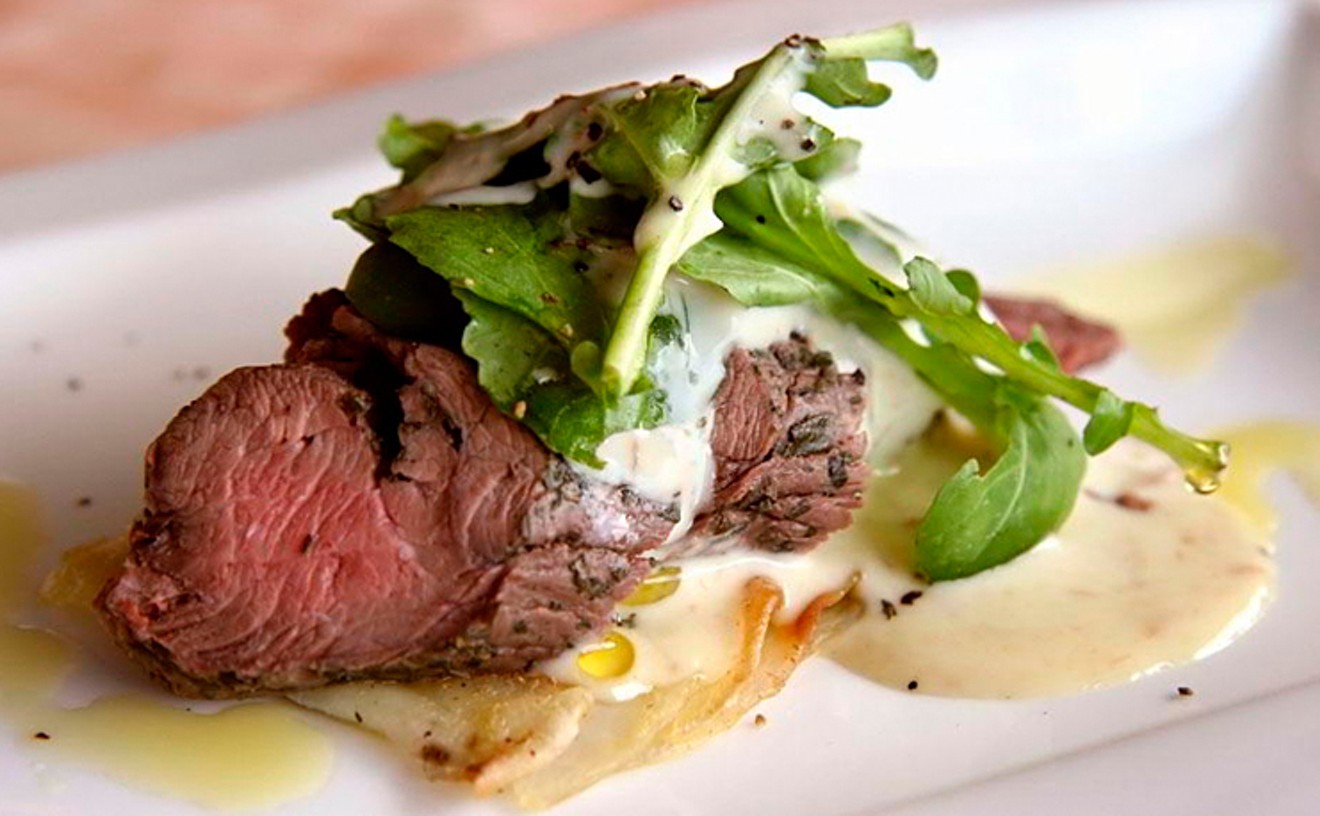Meat and bread. The simple combination is ubiquitous and delicious. After a step (all you get is one because the place is so small) inside Mary Ann Bakery, you're confronted by the sights and smells of the delight of dim sum: buns. For more than two decades, Karen and Emily Lim have been turning out sweet, eggy handheld treats filled with anything from barbecued pork to curried beef to bacon, onion, and cheese. None costs more than $1.50. Before you know it, that plan to "get just three" will turn into a dozen. The Lims' buns aren't limited to North Miami. If you're there early enough, you'll find employees from Asian markets all over town, even as far away as Lucky Oriental Mart in Sweetwater, grabbing their store's supply. The place is open 8:30 a.m. to 6 p.m. Monday through Saturday and 8:30 a.m. to 5 p.m. Sunday.
Best Chinese Take-Out, South
New Chinatown

Like so many things in Miami that are 25 or so years old (ancient!), New Chinatown recently underwent a face-lift. In 2007, the place was given a fresh coat of paint and an overhauled menu. To order the standard, run-of-the-mill Chinese take-out from here should be a felony. Go for the live Maine lobster "sun"-style ($45), with dried chilies, garlic, and onion. It's worth it. There's lamb in a spicy wine sauce ($19) and even ma po tofu ($12), a nuclear-hot Szechuan specialty with tofu and ground pork stew in a lava-hot sauce. The place is easy to find: It's the red barn-looking building with the Chinese characters on it.
- 5958 S. Dixie Highway, South Miami, 33143 Map
- 305-662-5649
Best Expensive Italian
Scarpetta

Call it an overdue win. But can you argue for any other place? At Scarpetta — Scott Conant's Miami Beach outpost at the Fontainebleau helmed by chef de cuisine Nina Compton — indulging in Italian cuisine comes at a steep price, but it's well worth it. The restaurant simply excels at serving clean flavors that aren't dumbed down for the American palate. The best example of this is the deceivingly simple spaghetti in a sauce of tomato and basil ($24). How could this be different from the canned stuff? One bite of the freshly made pasta covered in delectable red sauce, and "La Traviata" will echo in your mind. Another favorite is garganelli with English peas, pancetta, and a quail egg for extra richness ($28). But what is most surprising is that even after its 2008 opening and a changing of the kitchen guard in 2012, Scarpetta hasn't skipped a beat. It continues to serve Conant's greatest hits cooked to perfection. Charge it to the AmEx, Miami. This meal is worth it.
- 4441 Collins Ave., Miami Beach, 33140 Map
- 305-674-4660
- scarpettarestaurants.com
Best Inexpensive Italian
Salumeria 104

Salumeria 104 is more than you think. Sure, there's a selection of cheeses and cured meats, such as prosciutto di Parma and San Daniele, speck, guanciale, and soppressata at this midtown restaurant. And there are delectable antipasti and fresh pastas. There's vitello tonnato ($12) — thin slices of roast veal smothered in a creamy tuna sauce with fried capers — and homemade gnocchi alla romana ($14), sprinkled with Parmesan cheese and crisp prosciutto. Salumeria 104 has porchetta, roast quail, and grilled cuttlefish. In short, this joint isn't just salumi. Think of it more as a trattoria — the kind where you can get bread, wine, and cheese, as well as braised rabbit and sirloin steak. When you take a salumeria and add cooking worthy of a trattoria or ristorante, you get this exceptional, inexpensive Italian spot.
- 3451 NE First Ave., Miami, 33127 Map
- 305-424-9588
- www.salumeria104.com
Best Colombian Restaurant
Restaurante Monserrate

Arepas are to Colombian eateries as cubano sandwiches are to La Habana-inspired eateries: important enough that they'd damn well better represent, but far from the highlight of any legit menu. So, by all means, pop in to Restaurant Monserrate for the arepas — stuffed with queso blanco and perfectly tasty — but stay for the real treats: a feast of Colombian eats, from bandeja paisa (a massive plate packed with carne molida, rice, beans, maduros, and, yeah, one of those arepas) to mondongo, a traditional rice-and-tripe soup. Monserrate, which was founded in 1974, claims to be Miami's oldest Colombian eatery, and it still serves Dade's best dishes with flavors from Cali to Cartagena.
- 2093 Coral Way, Coral Gables, 33145 Map
- 305-856-8525
- www.restaurantemonserrate.com
Best Mexican Restaurant
Rosita's

Cruise south past the traffic-clogged vestiges of suburban sprawl, head west from the waning miles of Florida's Turnpike, and you'll cross into another Dade County. Neat rows of emerald tomato plants replace graffiti-tagged concrete. Tractors humming through palms pass by instead of Hummers blazing through stoplights. And filling your plate is home-cooked, underpriced Mexican food rather than canned salsa and overpriced, haute south-of-the-border fusion. No one does it better than Rosita's, a no-nonsense hole in the wall a few blocks southwest of the Turnpike's terminus. Everything on the menu costs less than $15, from a grease-free, piquant chile relleno ($9.50) to crisp sopes piled with veggies and chorizo ($1.75 each) to decadent pork ribs in chipotle sauce ($9.50). The map will tell you Rosita's is in Dade County, but it feels as far from Miami as Michoacán.
- 199 W. Palm Dr., Florida City, 33034 Map
- 305-246-3114
Best Brazilian Restaurant
Brazaviva Churrascaria

The gauchos of southern Brazil were the equivalent of North American cowboys: a nomadic people who resided in the vast plains of Rio Grande do Sol in the country's southern region. Like their brethren in Argentina and Uruguay, the gauchos would dig pits in the ground and start massive fires. Then they'd roast large pieces of delicious red meat on large wooden skewers. When the meats were ready, the gauchos would carve off thin slices and pass them around, often complementing the moist pieces of beef, pork, lamb, chicken, and sausage with seasonal roasted veggies from a recent harvest. Brazaviva Churrascaria in Doral continues the gaucho tradition seven days a week for Miamians in search of an affordable, mouthwatering Brazilian feast. Brazaviva offers 18 quality meats with an equal array of sides and salads at reasonable prices. Lunch is $22.99 a person, and a full rodizio meal costs $34.99 on weekends. Guests control the flow of their meats with green-red cards placed at their table. Flipping the green side up signals the carvers to begin serving. They bring out a continuous rotation of meats until you are satisfied or need a break. Flip the two-sided card to red to slow things down. To resume service, simply turn the card back to green. Brazaviva is open Monday through Thursday from 11:30 a.m. to 10 p.m. and till 11 p.m. Friday through Sunday. Just look for the burgundy canopy on a white office building.
- 7910 NW 25th St., Miami, 33122 Map
- 305-513-6373
- www.brazaviva.com
Best Argentine Restaurant
Lo De Lea

At Lo de Lea, the husband cooks, the wife hosts, and one or two friendly servers deliver the delicious meats, fine wine, and Italian flourish we've come to love from Argentina. The grilled sweetbreads — mollejitas a la provenzal ($12) — are a perfect starter. Vegetarians have plenty of options, such as the provoleta cheese starter ($10) and the Mediterranean-inspired patmos salad with cucumbers and feta ($12). For meat lovers, the mixed grill for two, called the parrillada, includes flank steak, blood sausage, chinchulines, and much more. Five homemade chimichurri sauces ($2 to $3) are the perfect topping for a grilled half-chicken with mash and escarole ($14), or crispy salmon with bok choy ($19). Feel like pasta? Try the orecchiette with broccoli rabe, chili, and Argentine sausage ($16). For dessert, the postre vigilante marries Gouda cheese and sweet quince in a beautiful union ($6). And, oh yeah, there's also homemade ice cream, tiramisu, and crêpes ($8). Enjoy your feast in the cool enclosed back patio and you'll feel like you're in Buenos Aires.
- 7001 Biscayne Blvd., Miami, 33138 Map
- 305-456-3218
- www.lodeleaargentinean.com
Best Nicaraguan restaurant
El Madroño

When it comes to duplicating the fine dining that visitors experience in the Nicaraguan tourist resort town of Montilmar, El Madroño has a giant leg up on the competition. For 15 years, this Nica restaurant has been serving a delicious menu of traditional dishes that makes a trip into Sweetwater, AKA Little Nicaragua, well worth the drive. El Madroño holds its own against other established Nica brands, such as Los Ranchos and El Novillo, with no-frills service and great prices. And it doesn't overwhelm your senses with the vibrant, colorful Nicaraguan tchotchkes that have made places like Yambo in Little Havana stand out in travel guides. El Madroño keeps it simple with stark white walls, modern dining tables and chairs, and a diner-style counter with sleek wooden stools. The only decoration is a lone painting of La Purisima — the Virgin Mary — near the back of the restaurant. If you're stopping in for lunch, try the salpicón, a cold, tangy chopped beef dish, with a side of rice and fried plantains for $7.50. Or maybe the family wants a nice grilled steak dinner. Order a mouthwatering baby churrasco ($12.99) for the missus. For yourself, go full size for only four dollars more. Junior can have the baby carne asada for $6.95. If you're in the mood for more adventurous cuisine, try the nacatamal, the tortilla con cuajada, the enchiladas Matagalpa, or the vigorón, all for less than five bucks each. Wash your meal down with cacao, a tasty cold Nica beverage, for $2.75. El Madroño is located in a shopping center on the corner of SW 107th Avenue and Flagler Street. There's ample parking and a walk-up window for take-out. It's open seven days a week, except major holidays, from 11 a.m. to 10 p.m.
- 10780 W. Flagler St., Miami, 33174-4403 Map
- 305-485-3332
Best Jamaican Restaurant
Island Restaurant & Variety Food Store
Ethnic cuisine tastes best when it's prepared island-style — slowly and flavorfully. Island Restaurant, a quaint Jamaican eatery in the Hammocks in West Kendall, does just that. In the nine-table dining room, the walls are painted bright orange and decorated with iconic photos of the island, including a tokin' Bob Marley. The waitress, Teayanna, is sweet and attentive. She is accommodating and helpful with the menu, which includes many popular Jamaican dishes that might be unfamiliar to mainlanders. There's oxtail ($11.50) and callaloo with codfish ($8). Some dishes veer from traditional recipes — the red pea soup ($1.75 cup, $3.50 small, $6 large), for example, is chock full of carrots and other veggies, along with the traditional dumplings and hunks of beef. The patty ($2), a Jamaican staple, is baked to perfection — the orange-hued pastry is flaky yet tender, and the meat (either beef or chicken) is spicy but not intolerable. The store attached to the dining room sells Kola Champagne, the citrusy cream soda of the Caribbean. Patrons can also purchase chips, bread, and sauces imported from the island.
- 10201 Hammocks Blvd., Miami, 33196 Map
- 305-388-5118
- www.islandrestaurantonline.com





